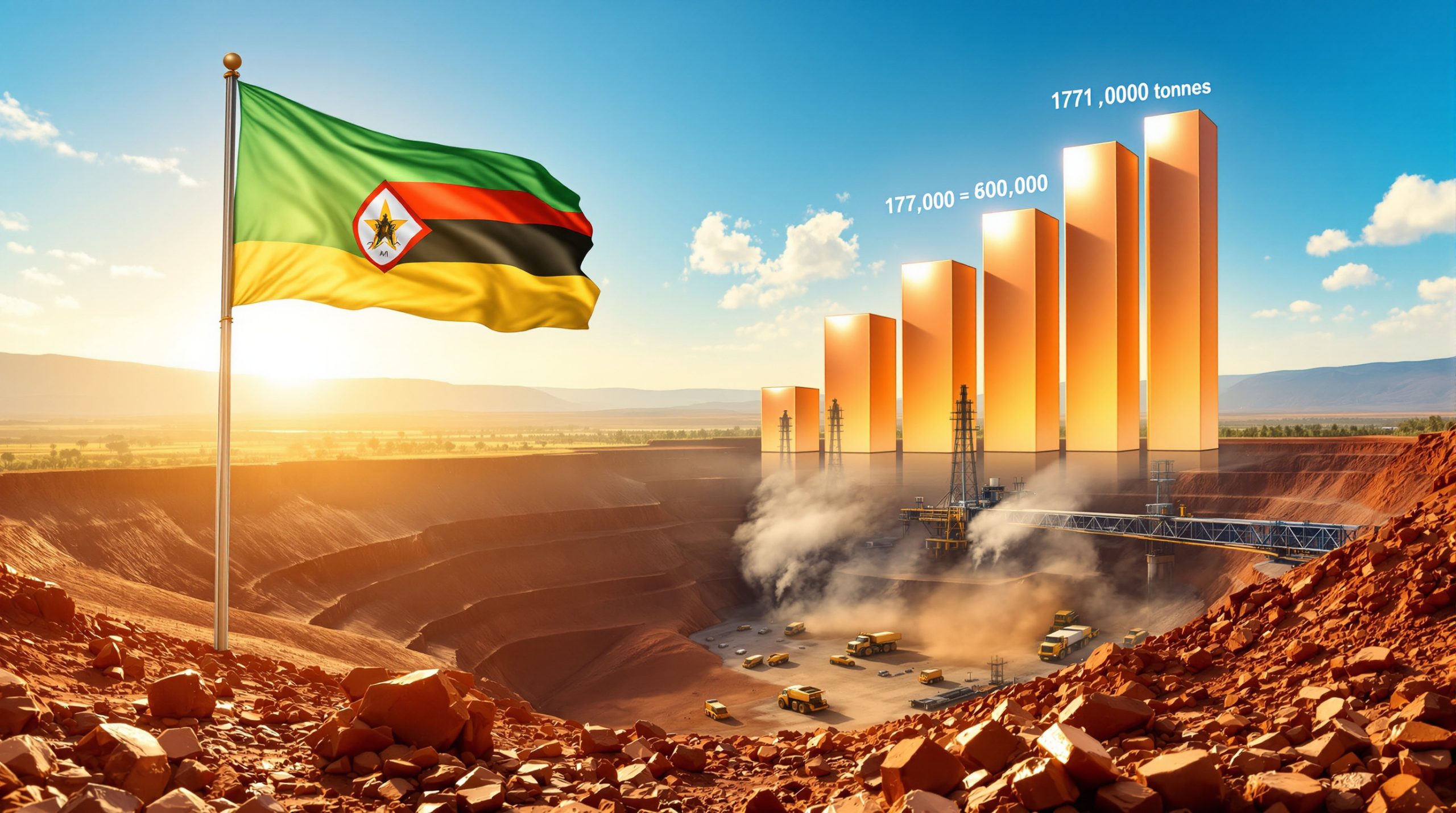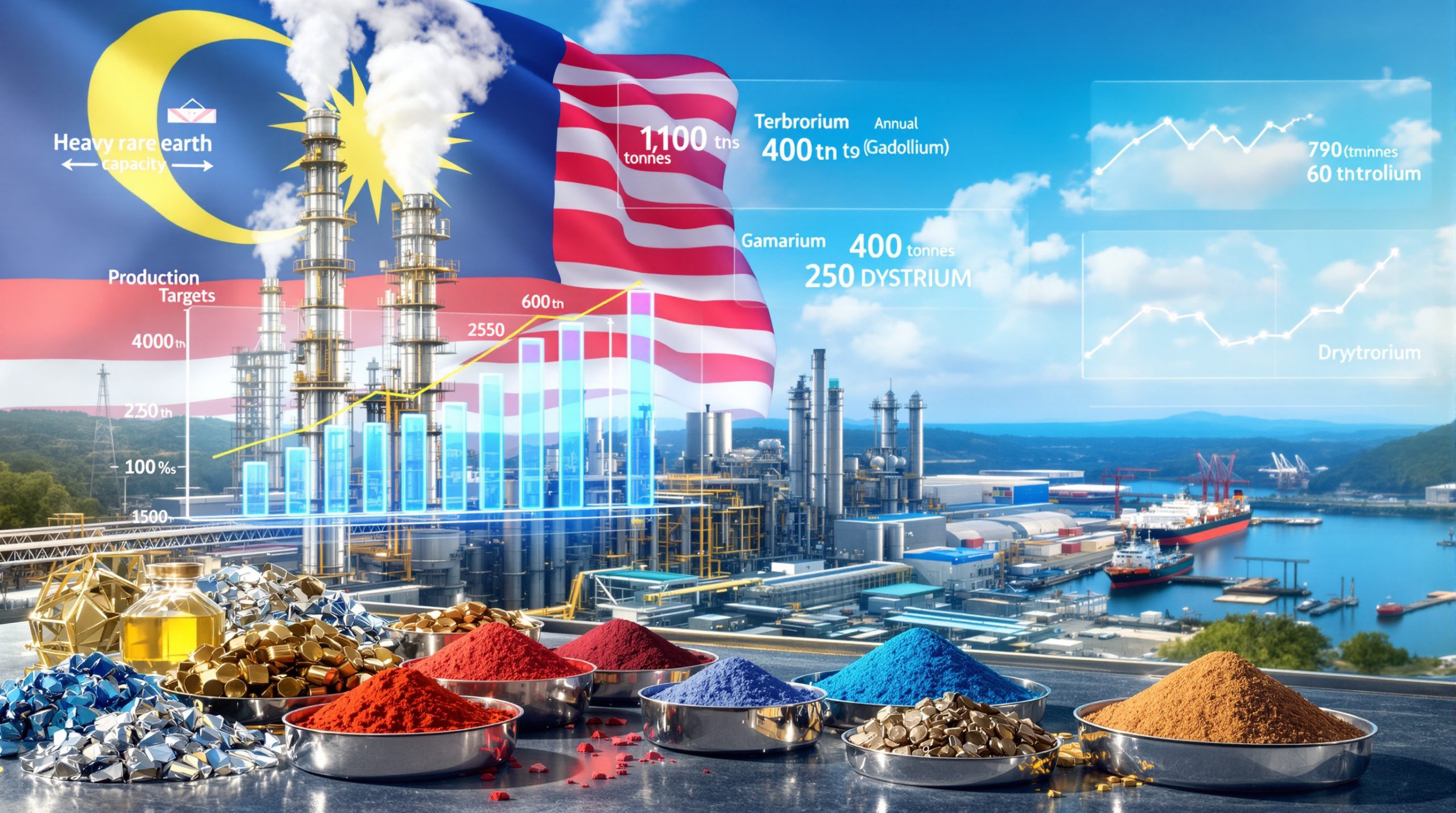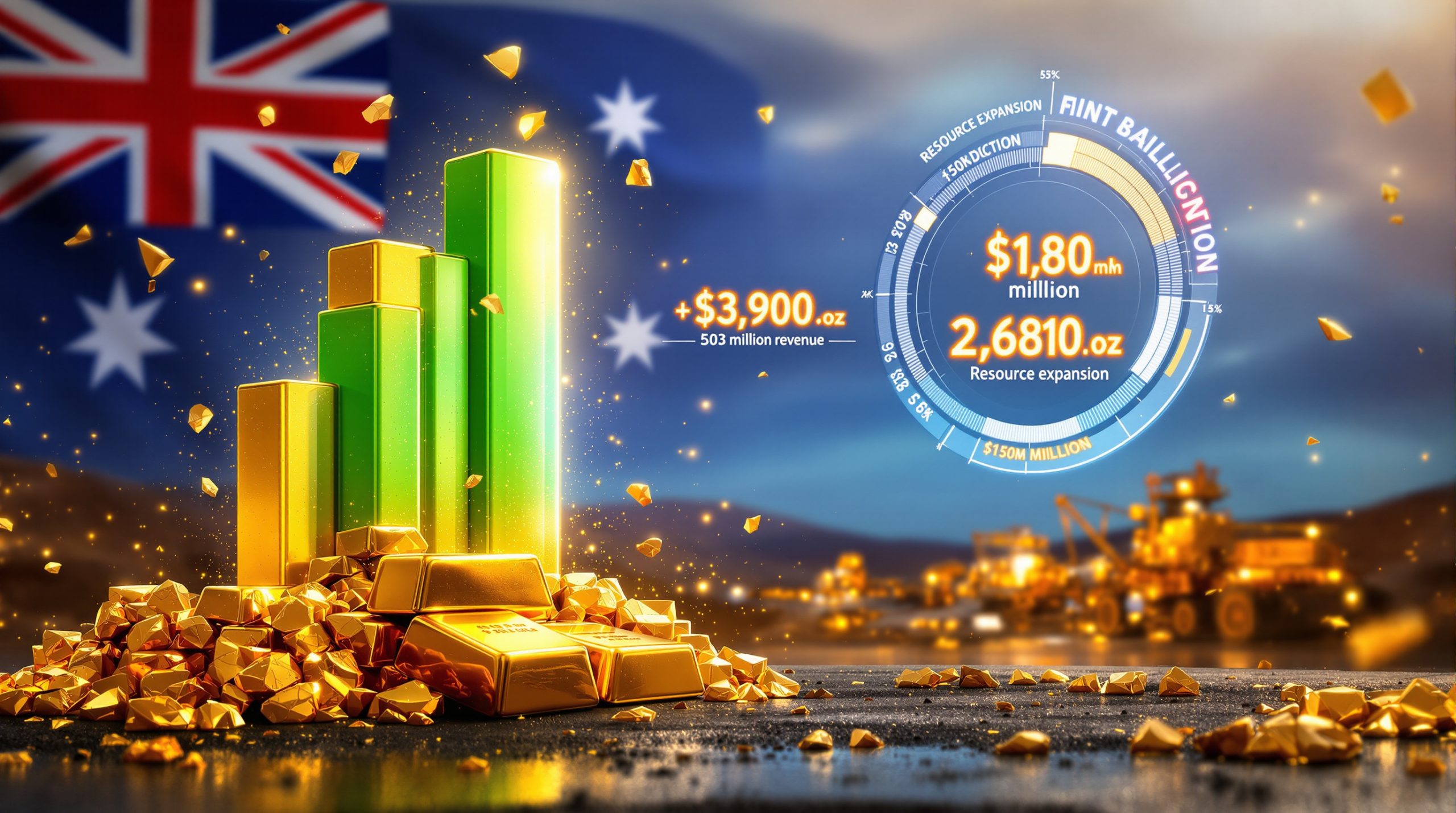China's Rare Earth Weaponization: Understanding the Strategic Metals at Stake
China's strategic dominance over rare earth metals has emerged as a critical geopolitical tool, particularly in its trade disputes with the United States. Rare earth elements, though relatively abundant in the Earth's crust, require complex extraction and refining processes that China has monopolized. This report examines the seven rare earth metals that China is weaponizing against the US—terbium, yttrium, dysprosium, gadolinium, lutetium, samarium, and scandium—detailing their applications, supply chain vulnerabilities, and implications for global industries. With China controlling 85% of global rare earth processing and producing over 58,300 tons of refined neodymium-praseodymium annually compared to the U.S.'s 1,130 tons, the competitive gap underscores the urgency of diversifying supply chains.
What Are Rare Earth Metals and Why Do They Matter?
Rare earth metals comprise 17 elements critical to modern technology, spanning civilian and military applications. Despite their name, these elements are not scarce but are challenging to isolate due to their dispersion in low-concentration deposits. Their significance lies in their role in high-tech manufacturing, including smartphones, wind turbines, and advanced weaponry. China's control of 85% of global refining capacity grants it disproportionate influence over industries reliant on these materials, enabling Beijing to leverage export restrictions as a geopolitical cudgel. For instance, the U.S. imports 93% of its yttrium compounds from China, highlighting dependency risks.
These elements have become essential to national security infrastructure, with applications in missile guidance systems, radar technology, and communication equipment. The Department of Defense considers several rare earths "critical materials" for maintaining military superiority, making their supply chain security a matter of strategic importance.
Beyond defense applications, rare earths are fundamental to the green energy transition. Wind turbines require up to 600 kg of rare earth elements per megawatt of capacity, while electric vehicles may contain several kilograms in their motors and battery systems. As critical mineral shortages impact the global clean energy transition, demand for these metals is projected to increase by 300-600% over the next two decades.
How Did China Gain Control of the Rare Earth Supply Chain?
China's Rare Earth Dominance by the Numbers
China's strategic investments since the 1990s have cemented its dominance, with the country now responsible for 85% of global mining operations and refining. The U.S., by contrast, produces just 1,130 tons of refined neodymium-praseodymium annually, compared to China's 58,300 tons. This disparity stems from China's vertical integration, combining mining, processing, and manufacturing under state-backed enterprises. The lack of U.S. processing infrastructure exacerbates dependency; for example, terbium exports to the U.S. comprise only 5% of China's total, with 85% directed to Japan.
China's dominance wasn't accidental but resulted from decades of strategic planning and environmental deregulation. While Western producers faced increasing environmental restrictions and cost pressures in the 1980s and 1990s, China embraced rare earth mining despite significant ecological damage. The country's willingness to bear environmental costs created artificially low prices that effectively drove competitors out of business.
By the early 2000s, China controlled over 95% of global rare earth reserves, a position it solidified through government subsidies, intellectual property acquisition, and integrated supply chains. This dominance enabled Beijing to implement production quotas in 2010, causing price spikes of up to 750% for certain elements and alerting global markets to their vulnerability.
The Strategic Value of Processing Capacity
Raw rare earth ores require multistep chemical processes to isolate usable elements, a capability almost entirely concentrated in China. David Merriman, Research Director at Project Blue, notes that this bottleneck "improves China's leverage in any negotiations," as seen in its restriction of seven metals critical to defense and clean energy. The U.S. Mountain Pass mine, reopened in 2018, remains limited to initial processing, necessitating overseas refinement for most applications.
Processing rare earths involves complex solvent extraction techniques requiring specialized equipment, significant energy inputs, and chemical expertise. The separation process for heavy rare earths like dysprosium and terbium is particularly challenging, requiring hundreds of separation stages to achieve acceptable purity levels. China's processing facilities have benefited from decades of technical refinement and economies of scale that new market entrants struggle to match.
The environmental footprint of rare earth processing presents another barrier to diversification. Each ton of refined rare earth oxide typically generates 2,000 tons of toxic waste, requiring substantial investment in waste management systems. China's historical willingness to externalize these environmental costs has created an artificial price advantage that Western competitors, bound by stricter regulations, find difficult to overcome.
Which Seven Rare Earth Metals Is China Restricting?
Terbium: The Ultra-Scarce Light Element
Terbium, constituting less than 1% of rare earth deposits, is vital for smartphone screens and temperature-resistant magnets in submarines and missiles. The U.S. Department of Defense classifies it as "one of the hardest elements to source," with China exporting 85% to Japan and 5% to the U.S. Its scarcity and defense applications make it a priority for stockpiling.
What makes terbium exceptionally valuable is its ability to enhance the thermal stability of permanent magnets. When added to neodymium-iron-boron magnets, terbium allows them to maintain performance at temperatures exceeding 200°C, critical for aerospace and military applications. The global market for terbium oxide is approximately 400-500 tons annually, but demand is growing at 8-10% per year as electric vehicle production increases.
Terbium's extraction presents unique challenges because it occurs alongside other heavy rare earths with similar chemical properties. Separating terbium requires multiple solvent extraction cycles, with each cycle increasing purity by only small increments. The cost of terbium oxide has fluctuated dramatically, reaching peaks of $2,000 per kilogram during Chinese export restrictions.
Yttrium: The Medical and High-Temperature Specialist
Yttrium's role in cancer therapies and high-strength alloys underscores its dual-use potential. The U.S. sourced 93% of its yttrium imports from China between 2019 and 2023, despite domestic mining at Mountain Pass, which lacks full separation facilities. Its use in superconductors and digital mining innovations amplifies supply chain risks.
Yttrium's importance in precision medicine has grown substantially, with yttrium-90 microspheres becoming a primary treatment for liver cancer. These radioactive microspheres deliver targeted radiation therapy directly to tumors while minimizing damage to surrounding tissues. Approximately 10,000 patients worldwide receive this treatment annually, with numbers increasing by 15-20% each year.
In the energy sector, yttrium-stabilized zirconia serves as the electrolyte in solid oxide fuel cells, which offer higher efficiency than conventional power generation. These fuel cells operate at temperatures of 800-1000°C and can achieve electrical efficiencies of 60%, compared to 35-40% for conventional power plants. As distributed energy systems gain popularity, demand for yttrium in this application is projected to triple by 2030.
Dysprosium: The "Hard to Obtain" Clean Energy Metal
Named for its Greek etymology, dysprosium is essential for wind turbine and electric vehicle motors. Over 50% of China's exports go to Japan, while the U.S. receives 0.1%, reflecting its minimal domestic capacity. Lynas Rare Earths' planned Malaysian expansion to produce dysprosium by June 2025 signals efforts to bypass Chinese controls.
Dysprosium's critical role stems from its ability to prevent demagnetization at high temperatures. A typical electric vehicle motor contains approximately 100-200 grams of dysprosium, with high-performance models requiring even more. The global market for dysprosium oxide is approximately 1,500 tons annually, with projected growth to 4,000-5,000 tons by 2035 as electric vehicle production accelerates.
Current mining operations outside China can extract dysprosium-bearing ores, but separation remains the bottleneck. The Browns Range project in Australia has identified significant dysprosium resources, but economic viability depends on sustained high prices and access to processing technology. Recycling offers a complementary approach, with potential recovery from end-of-life motors potentially reaching 800 tons annually by 2040.
Gadolinium: The Medical Imaging Enhancer
Gadolinium-based contrast agents improve MRI precision, while its neutron-absorption properties benefit nuclear reactors. Despite its medical importance, the U.S. relies entirely on imports, with no commercial separation facilities.
Gadolinium's paramagnetic properties make it irreplaceable in magnetic resonance imaging, with approximately 30 million procedures using gadolinium contrast agents performed globally each year. However, concerns about gadolinium retention in brain tissue have prompted FDA safety reviews and spurred research into alternative formulations that maintain diagnostic quality while reducing potential risks.
In nuclear applications, gadolinium's exceptionally high neutron capture cross-section makes it valuable for emergency shutdown systems in reactors. The element can absorb neutrons without becoming highly radioactive itself, a property that few other materials possess. Small modular reactor designs often incorporate gadolinium in their control systems, potentially increasing demand as nuclear power experiences renewed interest amid decarbonization efforts.
Lutetium: The Dense Catalyst
Lutetium's density and catalytic efficiency make it indispensable in oil refining. The U.S. imports nearly all its supply from China, with minimal exports to Japan.
As the heaviest rare earth element, lutetium has found emerging applications in petroleum cracking catalysts, where its electron configuration enhances reaction selectivity and reduces energy requirements. Refineries using lutetium-enhanced catalysts report 3-5% improvements in gasoline yield and reduced coke formation, translating to millions in additional revenue for large facilities.
Lutetium-177 has emerged as a promising radiopharmaceutical for treating neuroendocrine tumors and prostate cancer. Clinical trials show response rates of 40-60% in patients who have exhausted conventional options. Market analysts project the lutetium-based radiopharmaceutical market to reach $2 billion by 2028, driving increased demand for this previously overlooked element.
Samarium: The Heat-Resistant Magnet Material
Samarium-cobalt magnets, stable at high temperatures, are used in aircraft guidance systems. The U.S. lists it as a critical stockpiling target, yet domestic production ceased decades ago.
While neodymium magnets have largely supplanted samarium-cobalt in consumer applications, the latter remain essential in aerospace and defense systems operating in extreme environments. Samarium-cobalt magnets maintain their magnetic properties at temperatures up to 350°C, compared to approximately 150°C for unmodified neodymium magnets. This temperature stability is crucial for mission-critical applications where failure is not an option.
The Department of Defense maintains a stockpile of samarium-cobalt magnets for critical systems, but domestic manufacturing capacity remains limited. Recent initiatives aim to revitalize production, with funding for a pilot plant capable of producing 50 tons of magnets annually, approximately 10% of estimated military requirements.
Scandium: The Lightweight Structural Metal
Scandium's low density enhances aerospace components, but the U.S. has not produced it in over 50 years. China directs 14% of scandium-yttrium exports to the U.S., while Japan remains the primary buyer.
When alloyed with aluminum at concentrations of just 0.1-0.5%, scandium creates materials with exceptional strength-to-weight ratios and enhanced weldability. Russian MiG fighters have used scandium-aluminum alloys for decades, achieving weight reductions of 15-20% compared to conventional aluminum structures. Commercial aircraft manufacturers have begun incorporating these alloys in high-stress components, with potential fuel savings of 1-2% through weight reduction.
Scandium occurs at low concentrations in most deposits, typically 20-50 parts per million, making dedicated mining economically challenging. However, innovative extraction from titanium dioxide waste streams and nickel laterite processing offers promising low-cost sources. The global scandium market remains small, approximately 15-20 tons annually, but could expand tenfold if reliable, economical production enables broader adoption in aerospace and automotive applications.
What Rare Earth Metals Remain Unrestricted?
Neodymium and Praseodymium: The Magnet Metals
These elements, crucial for EV motors and wind turbines, remain unrestricted due to their economic ubiquity. China produces 58,300 tons annually, dwarfing the U.S.'s 1,130 tons. Their exclusion from controls reflects their broad industrial use, though reliance on Chinese supply persists.
Neodymium-iron-boron magnets represent the largest application for rare earths by value, with the market exceeding $15 billion annually. These magnets have revolutionized electric motors, enabling size and weight reductions of up to 70% compared to ferrite alternatives. A single 3-megawatt wind turbine contains approximately 600 kg of neodymium, highlighting the scale of demand from renewable energy.
The Mountain Pass mine in California primarily targets these "light" rare earths, which occur at higher concentrations and require less complex separation. However, the facility still ships concentrated ore to China for final processing, illustrating the persistent bottleneck in the supply chain. MP Materials, the mine's operator, aims to establish domestic processing by 2025, potentially producing 5,000 tons of refined metals annually.
How Is the US Responding to China's Rare Earth Strategy?
Current US Production Capabilities
The Mountain Pass mine, operational since 2018, focuses on neodymium and praseodymium but lacks full refining capacity. Its output represents less than 2% of China's production, underscoring the need for investment.
Mountain Pass's history illustrates the challenges in maintaining domestic production. Originally opened in 1952 to supply europium for color television phosphors, it dominated global production until the 1990s. Environmental issues and Chinese competition forced its closure in 2002, with ownership changing hands multiple times before MP Materials resumed operations. The company now employs 300 workers and produces approximately 15% of global rare earth concentrate, though full vertical integration remains years away.
Extraction technology at Mountain Pass has evolved significantly, with modern flotation techniques increasing recovery rates from 65% to over 90%. The facility has also reduced water consumption by 45% through closed-loop systems. However, complete separation capabilities for heavy rare earths like terbium and dysprosium would require additional investment exceeding $200 million and regulatory approvals that could take 3-5 years.
Emerging Alternative Supply Chains
The U.S. Department of Defense is funding domestic projects, while Lynas Rare Earths' Malaysian expansion aims to produce dysprosium and terbium by 2025. Recycling initiatives and byproduct extraction from uranium mining offer supplementary avenues.
Lynas, the largest non-Chinese producer, has secured $120 million in Pentagon funding to establish heavy rare earth separation in Texas, complementing its existing Malaysian operations. The company currently produces approximately 7,000 tons of rare earth products annually from its Mount Weld mine in Australia, with capacity expansion underway to reach 10,500 tons by 2025.
Urban mining—recovering rare earths from electronic waste—presents a promising complementary source. Hard disk drives contain approximately 20-30 grams of neodymium per unit, while end-of-life wind turbines represent concentrated rare earth repositories. Current recovery technologies can extract 90% of magnets from waste streams at costs competitive with primary production when rare earth prices exceed certain thresholds. Furthermore, Africa's critical minerals partnerships are emerging as a potential alternative supply source for rare earth elements.
What Are the Dual-Use Applications Making These Metals Strategic?
Military Applications
Rare earths underpin advanced defense systems: terbium in missile guidance, dysprosium in nuclear reactors, and scandium in fighter jets. Their role in emerging technologies like hypersonic weapons amplifies strategic stakes.
The F-35 Joint Strike Fighter contains approximately 420 kg of rare earth materials across various systems, including radar, electronic warfare suites, and targeting equipment. Its optical targeting system relies on yttrium-aluminum-garnet crystals that improve precision in adverse weather conditions. Production targets of 3,000 aircraft over the program's lifetime represent significant rare earth demand from a single weapons platform.
Submarine detection systems utilize rare earth magnets in towed array sonars, which can identify vessels at ranges exceeding 100 km based on minimal acoustic signatures. These systems require magnets stable at deep ocean temperatures and pressures, with terbium-doped composites offering superior performance. China's control of terbium supply thus directly impacts undersea warfare capabilities central to naval
Ready to Navigate China's Rare Earth Metal Restrictions?
Discover the latest insights on how China's rare earth weaponisation affects global markets and investment opportunities by visiting Discovery Alert's proprietary Discovery IQ model at https://discoveryalert.com.au/discoveries/, where our AI-powered analytics help investors identify actionable opportunities in companies developing alternative rare earth supply chains.




